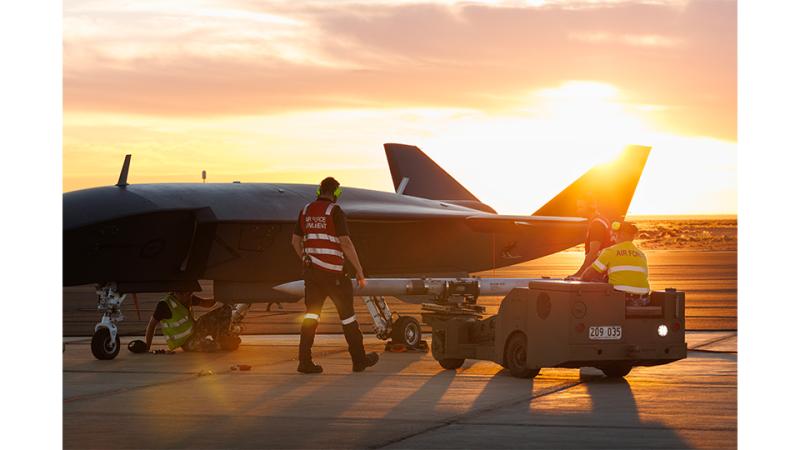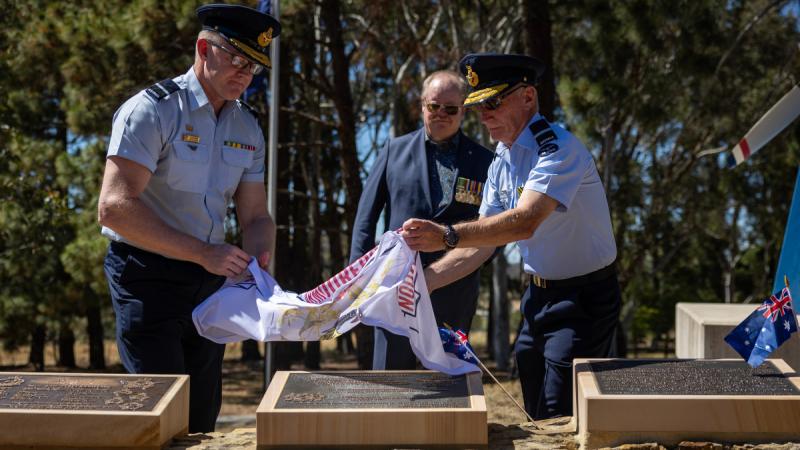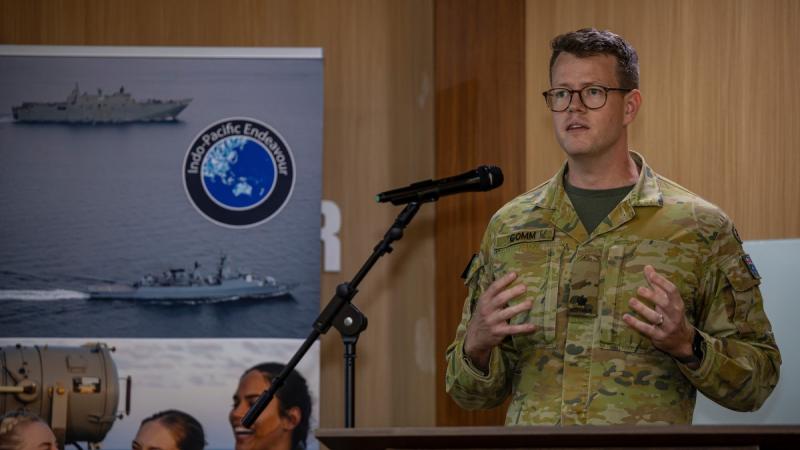9 July 2025
Recovery technician
Wherever you find Army’s armoured vehicles, you’ll find a recovery technician. And a cavalry squadron won’t go anywhere without one.
Craftsman Alex Cronin, of the 2nd Cavalry Regiment, once recovered an M113AS4 armoured personnel carrier after it hit washout while crossing a creek line – and floated downstream.
“I walked five metres through knee-high water before it suddenly dropped away – 1.7 metres straight down. That was the washout that took the carrier,” Craftsman Cronin said.
“I ducked down, hooked up a boat shackle and a chain, then chained it to the winch rope and pulled it out.”
He winched it 50 metres from his recovery vehicle.
Once the carrier was back on land, they found it completely dry inside. A testament to the seals.
A recovery technician’s main tool is the winch and Craftsman Cronin’s Australian Light Armoured Vehicle (Recovery) (ASLAV-R) is fitted with one that delivers an extra 3.3 tonnes of pulling power compared to the standard ASLAV.
But it’s the stabiliser spades – metal arms that dig into the ground to anchor the vehicle – that give it real muscle during a recovery.
'I like helping people out, and there’s real satisfaction in getting the task done. But I also enjoy the hands-on aspect of the work.'
Winch cables operate under extreme tension, and if they snap, they can whip back at deadly speed, causing serious injury.
That’s why, whenever a recovery technician is at work, they’ll direct you to stay behind cover.
While he acknowledges that a stuck vehicle is a nuisance for its crew, Craftsman Cronin admits he gets a bit excited when he’s called to a job.
“I like helping people out, and there’s real satisfaction in getting the task done. But I also enjoy the hands-on aspect of the work,” he said.
Vehicle crews are always appreciative, with Craftsman Cronin noting a simple thumbs-up as they drive away.
What he doesn’t always hear are the words heard from one grateful crew: “Legend”.
Vehicle technician
Putting a spanner in the works usually means trouble – but for a vehicle technician, it just means getting the job done.
Whether it’s routine maintenance or getting an ASLAV back in the fight, Army mechanics are the machine wizards who keep armour moving.
Corporal Jacob Sofia, of the 2nd Cavalry Regiment, said his favourite auto repair was a pack swap, which involves replacing a vehicle’s core components, such as the engine or transmission.
“It’s rewarding to see a vehicle that was performing poorly get new life in it,” he said.
Having spent most of his 12 years in the Army working on Mack trucks, Corporal Sofia now maintains ASLAVs, one of Army’s most familiar platforms with more than 30 years of operation.
Working on such a seasoned fleet gives mechanics like Corporal Sofia a range of repairs to tackle, some expected and easy to fix, while others require sweat and tears.
More common issues include air, fuel and oil leaks. But recently, alternators have been requiring attention.
In the field, replacing one is time-consuming because of its weight and cramped position in the engine bay.
“Because parts on multiple vehicles are often replaced around the same time, they tend to fail together toward the end of their lifecycle,” Corporal Sofia said.
'Sometimes we all just hit a brick wall and have to sleep on it. When we've been struggling, a good night's rest almost always helps us solve it in the morning.'
Corporal Sofia said his most challenging field repair was fixing a starter motor.
Typically, this would involve lifting the engine out, which can be done in the field, but rarely is. Instead, they have to find other ways to access the part and service it.
One solution is getting their smallest mechanic to snake their way deep into the engine bay to access the bolts.
Getting the motor out requires a precise series of movements, and the assembly sequence must be perfect. If it’s not, you have to go back and redo steps.
The team were once up until 1.30am performing that repair on the commanding officer’s vehicle.
“That’s probably the most difficult job to do on an ASLAV out in the field,” Corporal Sofia said.
Sometimes a vehicle presents a problem that stumps the team, particularly when it involves the electrical system.
Because the ASLAVs are older and the newer mechanics are trained on modern systems, they have to take a step back and use a multi-meter instead of relying on diagnostic computers.
“Sometimes we all just hit a brick wall and have to sleep on it. When we've been struggling, a good night's rest almost always helps us solve it in the morning,” Corporal Sofia said.


